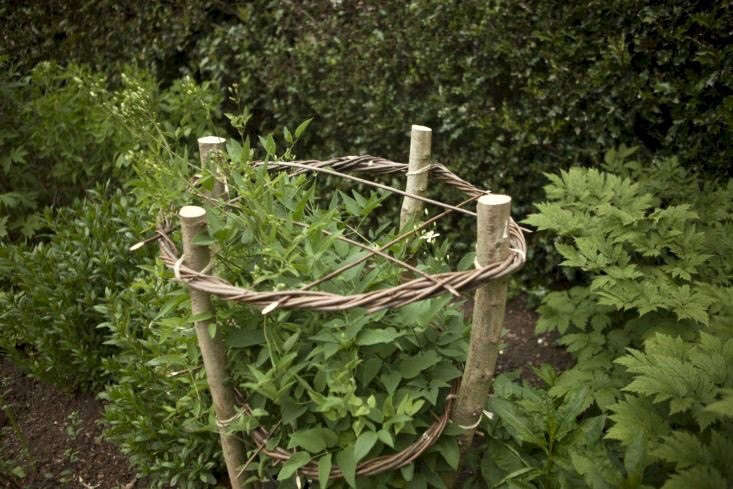The excitement of spring and the sublime atmosphere of May reach their high point by June 21, after which the middle age spread sets in. There is too much of one thing, too little of another and then a summer storm blows it all over.
Problem: The garden looks exhausted by midsummer.
Solution: Plan for a second, even better, burst later on.
Photography by Jim Powell, for Gardenista.
Orange and Red Palettes

Flaming June is the beginning of summer: the sap is still rising and all is fresh and dewy. July is hotter, and more flaming, yet somehow less exciting, for some. Certain people see the palette of blue, mauve, and rose pink as the best palette; anything later is vulgar and overblown.
As an opening argument for the beauty of late summer, I’d introduce Exhibit A, ‘Flaming June’, Sir Frederic Leighton’s painting (and very popular poster) of a reclining girl in a gown of—tangerine orange.

Roses and peonies are all very well but later in summer, plants from the south are able to grow with plants in the north. Dahlias are culturally as American or British as they are Mexican but they need a build-up of sunshine before flowering for months on end. South American twiners such as Cobaea scandens (cup-and-saucer vine), Ipomoea lobata (Spanish flag), morning glory and fluorescent nasturtium bring an atmosphere of warmth and languor.
Stake Tall Flowers

One reason why July gardens can look worn out, or just a mess, is that their energy has been spent on the crescendo of growing. Grown hard in a flower field, delphiniums don’t need to be staked; grown in a hedgerow, hardy geraniums do not grow enormous before flopping over. Soil conditions in a flower bed can be too luxurious and plants need to be staked. The above garden in England (Cottesbrooke Hall) was photographed in June, when it was just taking flight; a month later, this staking will have been hidden.

Staking early is key; a plant will always look propped up if it is caught after being blown over. For herbaceous perennials that die down in winter, mark their positions when clearing up, then build twiggy nests around early green shoots in spring. A sturdier arrangement like the one shown here is ideal for shrub roses, clematis, and sweet peas (in a taller version). Take photographs of successes and make notes on improvements.
The Chelsea Chop

The “Chelsea chop,, carried out at the end of May around the time of the famous flower show, is an effective way of growing plants harder. Take a clump of late flowering perennials such as aster (above) and cut them by about a third. Plants will be sturdier and less lanky. With flowers that are just getting ready to have their moment around this time, for instance hardy geraniums, there is nothing wrong with chopping just some of them, for staggered flowering.
Fruit Trees

Part of the beauty of a late summer garden, with its slow descent into autumn, is ripening fruit. Having been ignored for a few months, after their burst of blossom around March and April, fruit trees become interesting again.
Autumn Seedheads

As berries and fruit develop and leaves change color, seed heads give perennials an extended life, and a shelter for insects. As well as autumn mists, the sunshine in September and October is more slanting and dramatic, lighting up the extraordinary colors like cinema lights.
For more garden solutions, you can order my new book, My Garden is a Car Park: and Other Design Dilemmas, for £12.99 from Amazon UK. For US readers, The Problem with My Garden can be ordered for $17.99 from Amazon.com.












Have a Question or Comment About This Post?
Join the conversation (0)